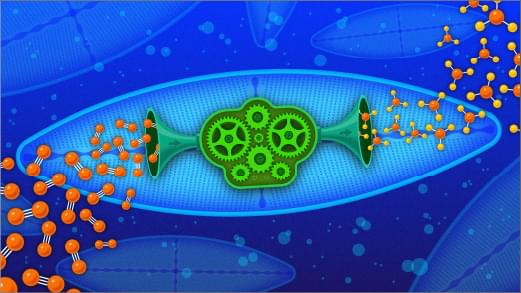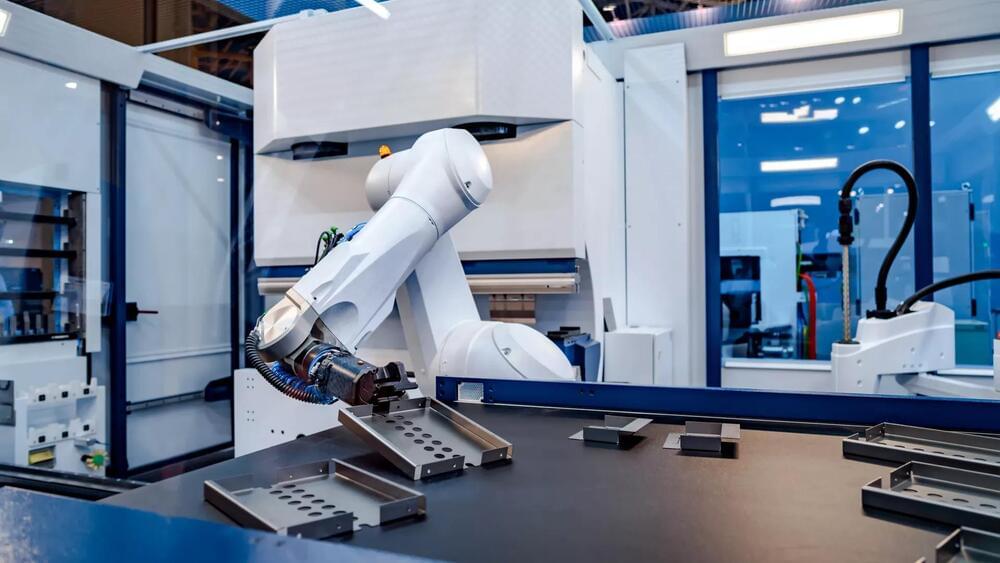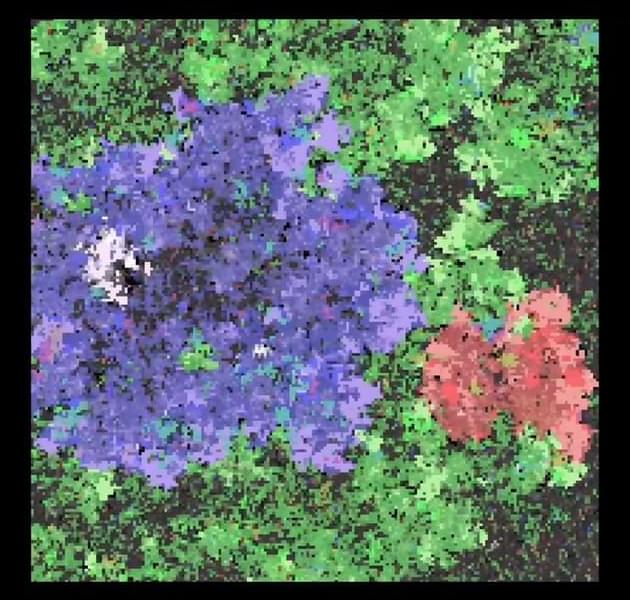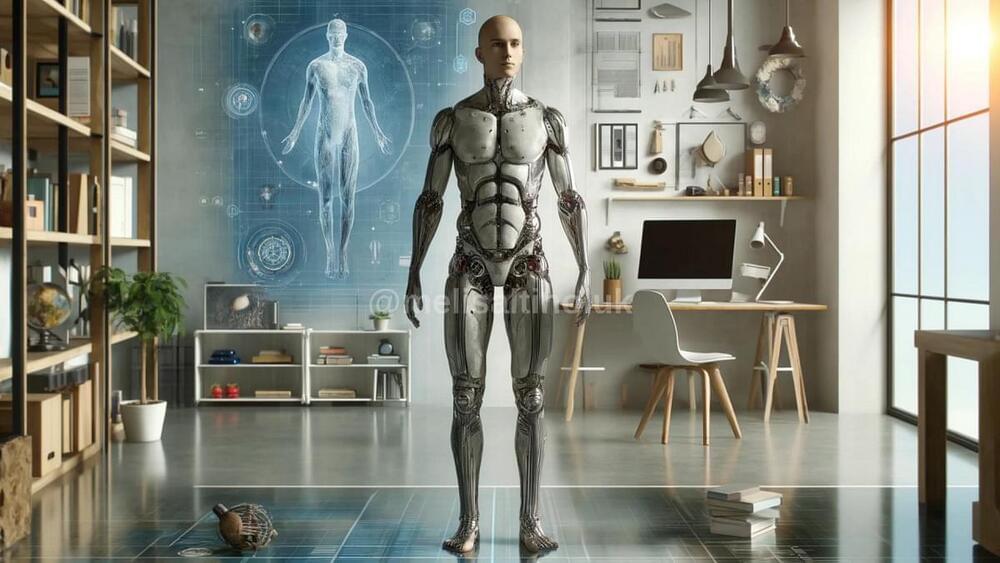A team of scientists from Montana State University has provided the first experimental evidence that two new groups of microbes thriving in thermal features in Yellowstone National Park produce methane—a discovery that could one day contribute to the development of methods to mitigate climate change and provide insight into potential life elsewhere in our solar system.
Category: biological – Page 72
Emergent Properties (Stanford Encyclopedia of Philosophy)
A very relevant subject for research.
The world appears to contain diverse kinds of objects and systems—planets, tornadoes, trees, ant colonies, and human persons, to name but a few—characterized by distinctive features and behaviors. This casual impression is deepened by the success of the special sciences, with their distinctive taxonomies and laws characterizing astronomical, meteorological, chemical, botanical, biological, and psychological processes, among others. But there’s a twist, for part of the success of the special sciences reflects an effective consensus that the features of the composed entities they treat do not “float free” of features and configurations of their components, but are rather in some way(s) dependent on them.
Consider, for example, a tornado. At any moment, a tornado depends for its existence on dust and debris, and ultimately on whatever micro-entities compose it; and its properties and behaviors likewise depend, one way or another, on the properties and interacting behaviors of its fundamental components. Yet the tornado’s identity does not depend on any specific composing micro-entity or configuration, and its features and behaviors appear to differ in kind from those of its most basic constituents, as is reflected in the fact that one can have a rather good understanding of how tornadoes work while being entirely ignorant of particle physics.


Frontiers: The purpose of the attention schema theory is to explain how an information-processing device
The brain, arrives at the claim that it possesses a non-physical, subjective awareness and assigns a high degree of certainty to that extraordinary claim. The theory does not address how the brain might actually possess a non-physical essence. It is not a theory that deals in the non-physical. It is about the computations that cause a machine to make a claim and to assign a high degree of certainty to the claim. The theory is offered as a possible starting point for building artificial consciousness. Given current technology, it should be possible to build a machine that contains a rich internal model of what consciousness is, attributes that property of consciousness to itself and to the people it interacts with, and uses that attribution to make predictions about human behavior. Such a machine would “believe” it is conscious and act like it is conscious, in the same sense that the human machine believes and acts.
This article is part of a special issue on consciousness in humanoid robots. The purpose of this article is to summarize the attention schema theory (AST) of consciousness for those in the engineering or artificial intelligence community who may not have encountered previous papers on the topic, which tended to be in psychology and neuroscience journals. The central claim of this article is that AST is mechanistic, demystifies consciousness and can potentially provide a foundation on which artificial consciousness could be engineered. The theory has been summarized in detail in other articles (e.g., Graziano and Kastner, 2011; Webb and Graziano, 2015) and has been described in depth in a book (Graziano, 2013). The goal here is to briefly introduce the theory to a potentially new audience and to emphasize its possible use for engineering artificial consciousness.
The AST was developed beginning in 2010, drawing on basic research in neuroscience, psychology, and especially on how the brain constructs models of the self (Graziano, 2010, 2013; Graziano and Kastner, 2011; Webb and Graziano, 2015). The main goal of this theory is to explain how the brain, a biological information processor, arrives at the claim that it possesses a non-physical, subjective awareness and assigns a high degree of certainty to that extraordinary claim. The theory does not address how the brain might actually possess a non-physical essence. It is not a theory that deals in the non-physical. It is about the computations that cause a machine to make a claim and to assign a high degree of certainty to the claim. The theory is in the realm of science and engineering.
10 Stages of AI (And Their Impact on Humanity)
This video explores the 10 hypothetical stages of AI and their impact on humanity. Watch this next video about 20 emerging technologies of the future: • 20 Emerging Technologies That Will Ch…
🎁 5 Free ChatGPT Prompts To Become a Superhuman: https://bit.ly/3Oka9FM
✨ Join This Channel: / @futurebusinesstech.
SOURCES:
• / whats-next-ai-10-stages-igor-van-gemert.
• The Singularity Is Near: When Humans Transcend Biology (Ray Kurzweil): https://amzn.to/3ftOhXI
💡 Future Business Tech explores AI, emerging technologies, and future technologies.
SUBSCRIBE: https://bit.ly/3geLDGO
Disclaimer:
Woah! Scientists Created Tiny Machines Driven By Microbes
Get a Wonderful Person Tee: https://teespring.com/stores/whatdamathMore cool designs are on Amazon: https://amzn.to/3QFIrFXAlternatively, PayPal donations ca…
HUN-REN BRC researchers develop laser-guided microrobots for cell-capturing
This is pretty impressive, they can move around individual cells. Video in comments:
Researchers at the HUN-REN Biological Research Centre, Szeged, have developed tiny tools to capture individual cells. According to their study published in the journal Advanced Materials, key innovations of using flexible microrobots is that they do not require any treatment of the cells to grab them and also allow the cells to be released after examination, enabling more efficient investigations than ever before.
Single-cell investigation methods such as single-cell genetics, proteomics, or imaging-based morphological classification have risen to the forefront of biological research in the last decade. These methods require precisely controlled physical manipulation of individual cells on the microscopic scale. This manipulation at the single-cell level means their transportation and rotation in a controlled manner, for which several methods have been developed over the last decades. These cutting-edge methods use active movable microtools such as microgrippers similar in size to the cells, complex electrophoretic systems that use high-frequency electric fields to move the cells, or optothermal traps that create liquid flow through localised laser heating. The technique of optical tweezers fits into this category, being one of the most efficient single-cell manipulation methods and was awarded a Nobel prize in 2018.

Google creates self-replicating life from digital ‘primordial soup’
A digital “primordial soup” with no rules or direction can lead to the emergence of self-replicating artificial life forms, in an experiment that may hint at how biological life began on Earth.

All about Transhumanism
I have recently read the report from Sharad Agarwal, and here are my outcomes by adding some examples:
Transhumanism is the concept of transcending humanity’s fundamental limitations through advances in science and technology. This intellectual movement advocates for enhancing human physical, cognitive, and ethical capabilities, foreseeing a future where technological advancements will profoundly modify and improve human biology.
Consider transhumanism to be a kind of upgrade to your smartphone. Transhumanism, like updating our phones with the latest software to improve their capabilities and fix problems, seeks to use technological breakthroughs to increase human capacities. This could include strengthening our physical capacities to make us stronger or more resilient, improving our cognitive capabilities to improve memory or intelligence, or even fine-tuning moral judgments. Transhumanism, like phone upgrades, aspires to maximize efficiency and effectiveness by elevating the human condition beyond its inherent bounds.

Century-Old Biological Experiment Reveals Genetic Secrets of Important Crop
A long-term study since 1929 has revealed significant insights into barley’s evolution, showing its adaptation to different environments and the substantial impact of natural selection. This research underscores the limitations of evolutionary breeding and highlights the need for further exploration to enhance crop yields.
Utilizing one of the world’s oldest biological experiments, which commenced in 1929, researchers have revealed how barley, a major crop, has been influenced by agricultural pressures and its evolving natural environment. These findings highlight the significance of long-term studies in comprehending the dynamics of adaptive evolution.
The survival of cultivated plants after their dispersal across different environments is a classic example of rapid adaptive evolution. For example, barley, an important neolithic crop, spread widely after domestication over 10,000 years ago to become a staple source of nutrition for humans and livestock throughout Europe, Asia, and Northern Africa over just a few thousand generations. Such rapid expansion and cultivation have subjected the plant to strong selective pressures, including artificial selection for desired traits and natural selection by being forced to adapt to diverse new environments.